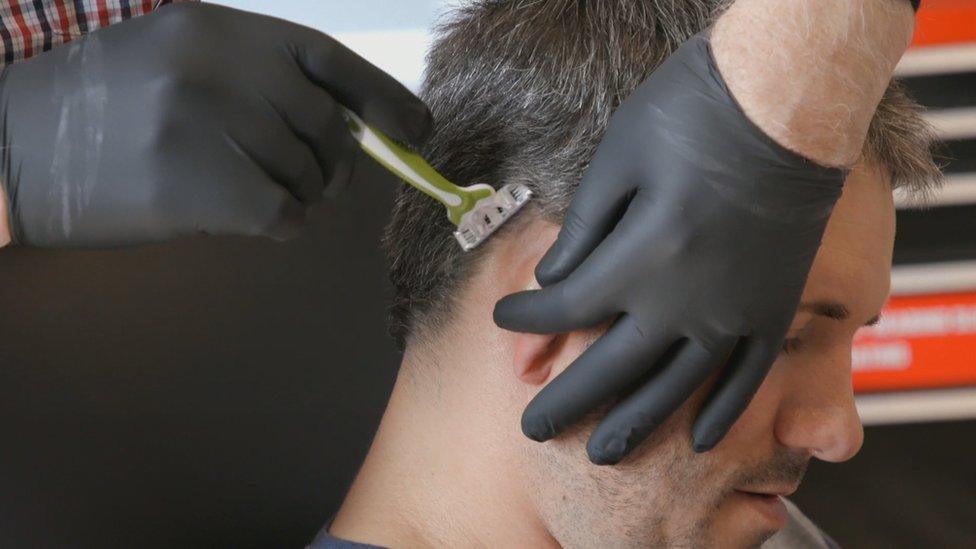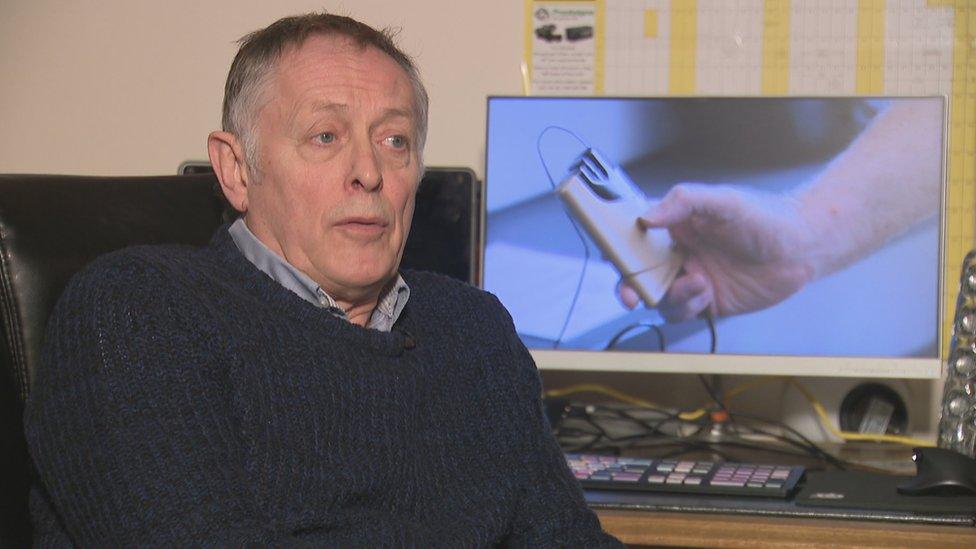The Scots doctor and her 'cure' for drug addiction
- Published

Dr Meg Patterson, who died in 2002, developed the NET system after studying acupuncture in Hong Kong
Scottish surgeon Dr Meg Patterson thought she had a cure for drug addiction but the technique she pioneered in the mid-1970s was never taken seriously. However, interest in it is growing in the US.
Dr Patterson, who died in 2002, invented a method of treating opium addicts which used electrodes to send low-voltage electrical pulses into the brain.
Her neuro-electrical treatment (NET) system, which claims to get chronic users off drugs within a week, is currently undergoing tests in the US.
A new documentary - 'The Final Fix', external - by Glasgow-based filmmaker Norman Stone follows five long-term users as they undergo the treatment in Kentucky.
Mr Stone has been following the story since 1977 when he made his first BBC film for the Everyman series about Meg Paterson and NET.
He said: "I went from doubter to 'my goodness, this is working'. I could see it working physically on that very first film.
"And you expect, like Florence Nightingale, everything is going to be wonderful and the medical people are going to absorb it and accept it. It tended not to be the case. They closed doors rather than opened doors."

The NET device is powered by a single AA battery, and can be used for eight patients
Some sceptics have dismissed the claims of NET's successes as "quackery".
There has been very little scientific or medical investigation of NET, apart from a series of articles written in journals by Dr Patterson.
In 2007, Scotland's then First Minister, Jack McConnell, paid a private visit to a remote farm house in Stirlingshire where a small-scale trial of NET was underway.
No government money or support was forthcoming and three months later Mr McConnell was out of office.
Drugs expert Dr Laurence Gruer, director of public health science at NHS Health Scotland, urged caution.
He said NET appeared to treat withdrawal symptoms , externalrather than the addiction itself.
"I think this is in the same ball park as acupuncture which produces some stimuli which stops the brain from feeling so raw and bad," he told the BBC's Good Morning Scotland programme.
"We have to be rather cautious about being too optimistic about this particular approach. It may help one or two people but whether it helps a large number is another matter."

How does NET work?

Patients' heads are shaved before two electrodes are placed on their scalp to deliver small electric pulses
It is based on the principles of acupuncture which Dr Paterson studied when she was a doctor in Hong Kong in the early 1970s.
A small palm-sized device is connected to two tiny electrodes which are attached to the patient's head.
They deliver a faint pulse - not an electric shock - to the patient at a rate previously determined by the clinical team based on a number of factors including the substance to which the patient is addicted.
The pulses stimulate the pain-combatting endorphins which addiction has destroyed.

Kentucky trials

Film maker Norman Stone hopes his documentary will stimulate new debate about a simple, cheap, successful option to reduce addiction
Despite the scepticism, interest is growing in the United States, where the governor of Kentucky, Andy Beshear, is enthusiastic about its possibilities.
The state is facing a drugs crisis and the governor blames pharmaceutical companies for blocking a cheap, effective alternative to their therapies.
"They claim to be healthcare companies," he says. "And look at what has happened, based on their products.
"I know that companies think they ultimately pursue the bottom line or the stock price, but we all are supposed to have a soul. Somewhere."